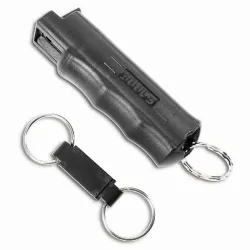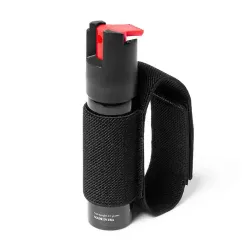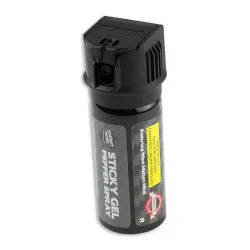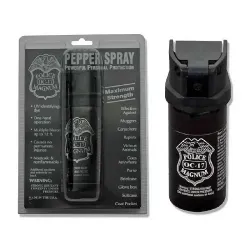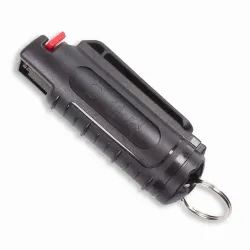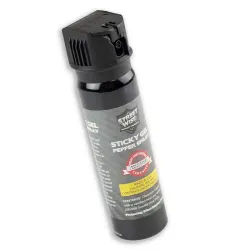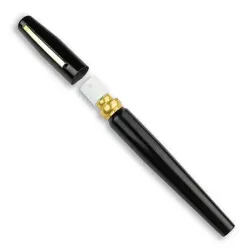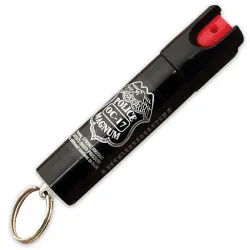Self Defense Pepper Spray
-
$14.95
-
$26.95
-
$15.95
-
$26.95
-
$24.95
-
$26.95
-
$23.95
-
$13.95
-
$15.95
-
$15.95
-
$18.95
-
$16.95
-
$18.95
-
$14.95
-
$21.95
-
$14.95
Pepper spray works by using the active compound oleoresin capsicum (OC), a natural chemical derived from hot peppers. This compound causes an intense burning sensation on contact with skin, especially the eyes, nose, and respiratory system. When sprayed directly in an attacker's face, OC pepper spray can cause immediate eye closure, coughing, choking, shortness of breath, and disorientation, giving the victim a critical opportunity to escape. It's this potent, non-lethal nature that makes OC pepper spray one of the most trusted tools in personal defense.
One of the great things about pepper spray is that it's both highly effective and incredibly accessible. Most states in the U.S. allow citizens to carry it with minimal restrictions, and it doesn't require any special training to use. Our self defense pepper sprays are designed for intuitive, point-and-spray use. Many feature ergonomic grips, quick-release keychain attachments, and flip-top safety caps that prevent accidental discharge. Some of our most popular models are those that fit seamlessly into your everyday routine, such as a pepper spray keychain that can go anywhere you go.
A fascinating aspect of some modern pepper sprays is the inclusion of UV marking dye. This invisible dye transfers onto an attacker's skin or clothing when sprayed and can later be seen under ultraviolet light. This feature aids law enforcement in identifying suspects after an incident, even if they flee the scene or try to wash the spray off. While the OC causes the immediate burning and incapacitating effect, the UV dye provides a lasting forensic trace - another layer of protection and peace of mind.
Pepper spray has an interesting history as well. Originally developed for use by animal control and postal workers in the 1960s to ward off aggressive dogs, it was later adopted by law enforcement in the 1980s and eventually became widely available to the general public. Over time, it's evolved into many forms including pepper spray guns, lipstick-sized containers, and tactical foggers. Today, it's widely recognized as one of the best pepper spray for self defense solutions available - especially for those who don't want to rely on more lethal alternatives.
For those who prefer layered protection, pepperspray works well in tandem with other tools like tactical flashlights, personal alarms, or even small striking weapons like batons. However, its portability and ease of use often make it the first and most trusted line of defense for many.
What Is Pepper Spray Made Of?
Pepper spray is primarily composed of oleoresin capsicum (OC), an oily extract derived from hot chili peppers. This is the same chemical that gives hot peppers their burning sensation, but in pepper spray, it's concentrated to a much more potent level. Typically, OC content in pepper spray ranges from 2% to 10%, with higher percentages indicating stronger potency.
To make the solution usable in spray form, OC is suspended in a carrier agent, such as water, alcohol, or an oil-based solvent. A propellant like nitrogen or carbon dioxide is then used to pressurize the canister and expel the solution when triggered. Some formulations also contain UV dye, which marks the target invisibly for later identification under blacklight.
What to do if you get Pepper Sprayed?
Getting pepper sprayed can be a painful and disorienting experience, but it's important to stay calm and take the right steps to minimize the effects and prevent further injury. While the discomfort is intense, the effects of OC pepper spray are temporary and generally subside within a relatively short amount of time, usually between 30 minutes and two hours. Here's what you should do if you find yourself in this situation:
1. Stay Calm and Assess the Situation
First, take a deep breath and try to remain calm. It's natural to panic when you're hit with something that causes immediate pain and irritation, but panicking can worsen the situation. Focus on protecting your airways and your eyes. Avoid rubbing your face, as this can spread the pepper spray to other areas and worsen the burning sensation.
2. Get to Fresh Air
Pepper spray works by irritating the mucous membranes in your eyes, nose, and throat. If you're indoors or in an enclosed space, it can be even harder to breathe due to the overwhelming irritation. As quickly as possible, move to fresh air to help clear your lungs and begin the process of recovery. Getting outdoors where there's ventilation can help reduce the burning sensation in your eyes and nose.
3. Flush Your Eyes Immediately
Your eyes will likely be the most affected part of your body, and they'll probably start watering and swelling immediately. The best way to relieve the pain is to flush them with cool, clean water. Ideally, you should flush your eyes for 10 to 15 minutes. Tilt your head to one side and gently rinse your eyes under running water, or if available, use saline solution. Blink frequently to help remove the irritating compounds.
If you don't have access to water right away, a commercial eyewash or saline solution (often found in first aid kits) is a good substitute. Never rub your eyes with your hands, as this can push the irritant deeper into your eyes and worsen the symptoms.
4. Rinse Your Skin with Water or Mild Soap
After flushing your eyes, you should move on to rinsing any exposed skin. Pepperspray contains an oily substance that can cling to your skin and continue to cause irritation. Rinse your face, neck, and any other affected skin with cool or lukewarm water. Avoid using hot water, as it can open your pores and make the irritation worse.
Mild soap may be used to gently wash your skin after you've rinsed with water, as it can help break down the oilier components of the spray. However, be cautious - do not scrub vigorously, as this could cause the oil to spread. Be especially careful around your eyes and avoid getting soap in them.
5. Avoid Touching Your Face or Skin
If you need to wipe your face or eyes, be sure to use a clean cloth or tissue that hasn't come into contact with the pepper spray. If you touch your face with your hands after being sprayed, the OC pepper spray could spread to other areas of your body. It's crucial to avoid touching sensitive parts of your body like your mouth, eyes, or nose until you've fully cleaned your hands.
6. Remove Contaminated Clothing
Pepper spray can leave a residue on your clothing, and it will continue to cause irritation as long as it stays in contact with your skin. Remove any contaminated clothing, including jackets, hats, or scarves, to avoid further exposure. If possible, place these clothes in a sealed plastic bag or wash them separately from other clothes to remove the residue.
7. Do NOT Rub Your Skin or Eyes
It's incredibly important not to rub your eyes or skin after being pepper sprayed. Rubbing can push the oleoresin capsicum (OC) compound deeper into the skin and worsen the irritation. Instead, rinse thoroughly and give your skin time to absorb and process the irritant. Rubbing or scratching the affected areas can also lead to additional inflammation and increase the duration of the discomfort.
8. Drink Water and Hydrate
If you're experiencing throat irritation or difficulty breathing due to the spray, drinking plenty of water can help soothe your throat and prevent dehydration. Avoid drinking milk, as this may not effectively neutralize the irritant. Water helps flush the chemical irritants from your system and can aid in relieving the burning sensation.
9. Wait for the Effects to Subside
After you've flushed the affected areas with water and removed contaminated clothing, the best course of action is to wait for the effects to subside. The discomfort may last anywhere from 30 minutes to 2 hours, depending on how much spray you were exposed to, how concentrated the pepper spray was, and your personal tolerance to the irritant. Most symptoms, including the burning sensation, eye irritation, and difficulty breathing, will gradually decrease over time.
10. Seek Medical Attention if Necessary
While the effects of pepper spray are usually temporary, in some cases, they can cause prolonged symptoms, especially for individuals with respiratory conditions like asthma or allergies. If you or someone else is having difficulty breathing, experiencing severe eye injury, or showing signs of an allergic reaction (such as swelling or difficulty swallowing), it's important to seek medical attention immediately.
If you're unsure whether the exposure has caused any serious damage, it's always better to err on the side of caution and seek professional care.
By following these steps, most individuals will find relief from pepper spray exposure without requiring medical intervention. However, if symptoms persist or worsen, it's important to seek help. Pepper spray is a powerful tool for self-defense, but being aware of how to handle it - both for prevention and recovery - will ensure that you can use it effectively and stay safe in the event of an attack.
What is OC Pepper Spray?
OC Pepper Spray refers to a type of pepper spray that uses oleoresin capsicum (OC) as its active ingredient. OC is a natural extract derived from hot chili peppers, specifically the Capsicum family, which includes varieties such as habaneros and jalapenos. The compound is the main reason why hot peppers cause a burning sensation when consumed or touched.
When used in OC pepper spray, oleoresin capsicum is highly concentrated and mixed with a carrier liquid such as alcohol, water, or oil. This allows the active ingredient to be delivered in a fine mist, stream, or foam that can be easily directed toward an attacker. Upon contact with the skin, eyes, or mucous membranes, the compound causes intense irritation and discomfort, resulting in temporary blindness, difficulty breathing, and a strong burning sensation.
The primary reason OC pepper spray is so effective in self-defense is its ability to incapacitate an attacker without causing permanent damage. The burning effect is intense enough to give the victim critical time to escape, but the discomfort is usually temporary, lasting anywhere from 30 minutes to two hours, depending on the strength of the spray and individual tolerance.
While OC pepper spray is widely recognized for its ability to deter aggressive behavior, it is also non-lethal, making it a safe and legal alternative to firearms or other weapons in many jurisdictions. Many people prefer OC pepper spray for personal defense due to its effectiveness, ease of use, and portability.
In summary, OC pepper spray is a powerful self-defense tool derived from natural chili pepper extract, capable of delivering intense, yet non-lethal, irritation to an attacker. Its non-toxic, temporary effects make it one of the most trusted and popular options in personal safety.
What Happens if you Ingest Pepper Spray?
Accidental ingestion of pepper spray - though uncommon - can cause severe burning in the mouth, throat, and stomach. Symptoms may include excessive salivation, nausea, vomiting, abdominal cramps, and difficulty swallowing. While it's rarely life-threatening in small amounts, it can be extremely uncomfortable.
If pepper spray is ingested, it's important to rinse the mouth thoroughly and drink plenty of water. Avoid inducing vomiting. If symptoms are severe or persist, seek medical attention immediately. Always store pepper spray out of reach of children and avoid using it in enclosed spaces to reduce the risk of unintended exposure.
How Long do the Effects of Pepper Spray Last?
The effects of pepper spray typically begin within seconds and can last anywhere from 30 minutes to two hours, depending on the formulation and individual sensitivity. The most intense effects - such as eye closure, difficulty breathing, and intense burning - usually subside within the first 15 to 45 minutes.
Residual effects like redness, coughing, and skin irritation may linger longer. Clothing exposed to spray should be washed separately, and it may take a few washes to fully remove the oily residue.
What is the difference between Pepper Spray and Mace?
Though often used interchangeably in conversation, pepper spray and Mace are not the same. Pepper spray refers to a general category of non-lethal self-defense sprays that use oleoresin capsicum as the active ingredient. Mace, on the other hand, is a brand name that produces a variety of self-defense products, including OC sprays.
Historically, "Mace" referred to a CN tear gas-based product, which is a chemical irritant, not derived from peppers. Today, many Mace-branded products use OC just like other pepper sprays, but the term should not be used generically. At KarateMart.com, we focus on high-quality OC pepper spray products that are effective, fast-acting, and legally compliant.






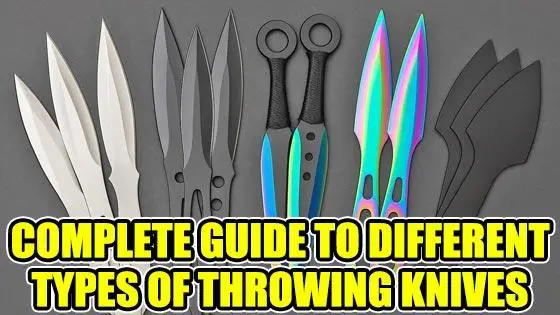

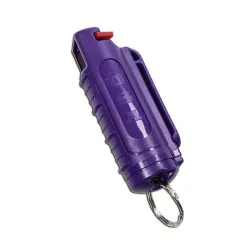
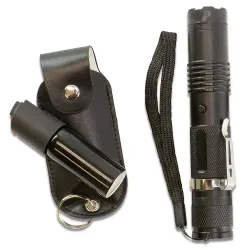
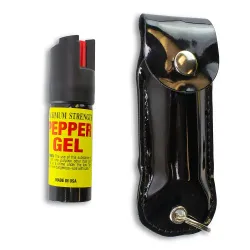
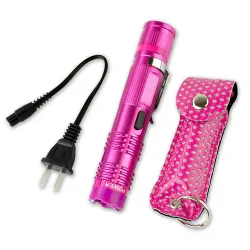
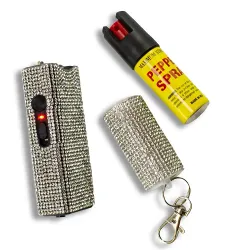

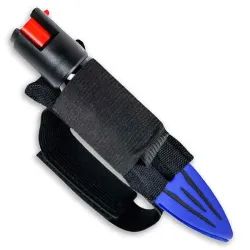
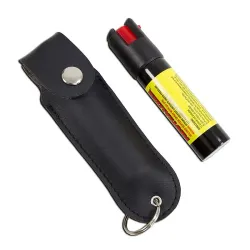
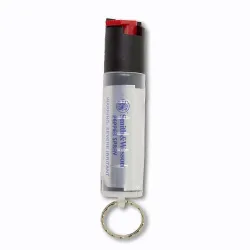
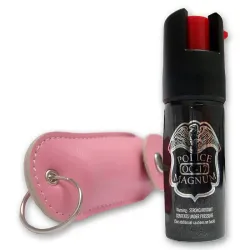
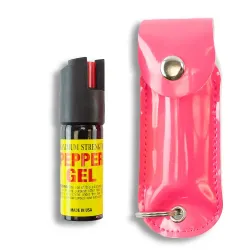
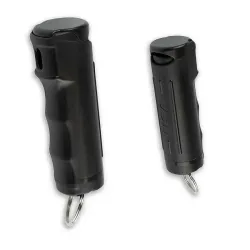
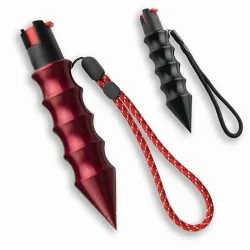

 (1)
(1)